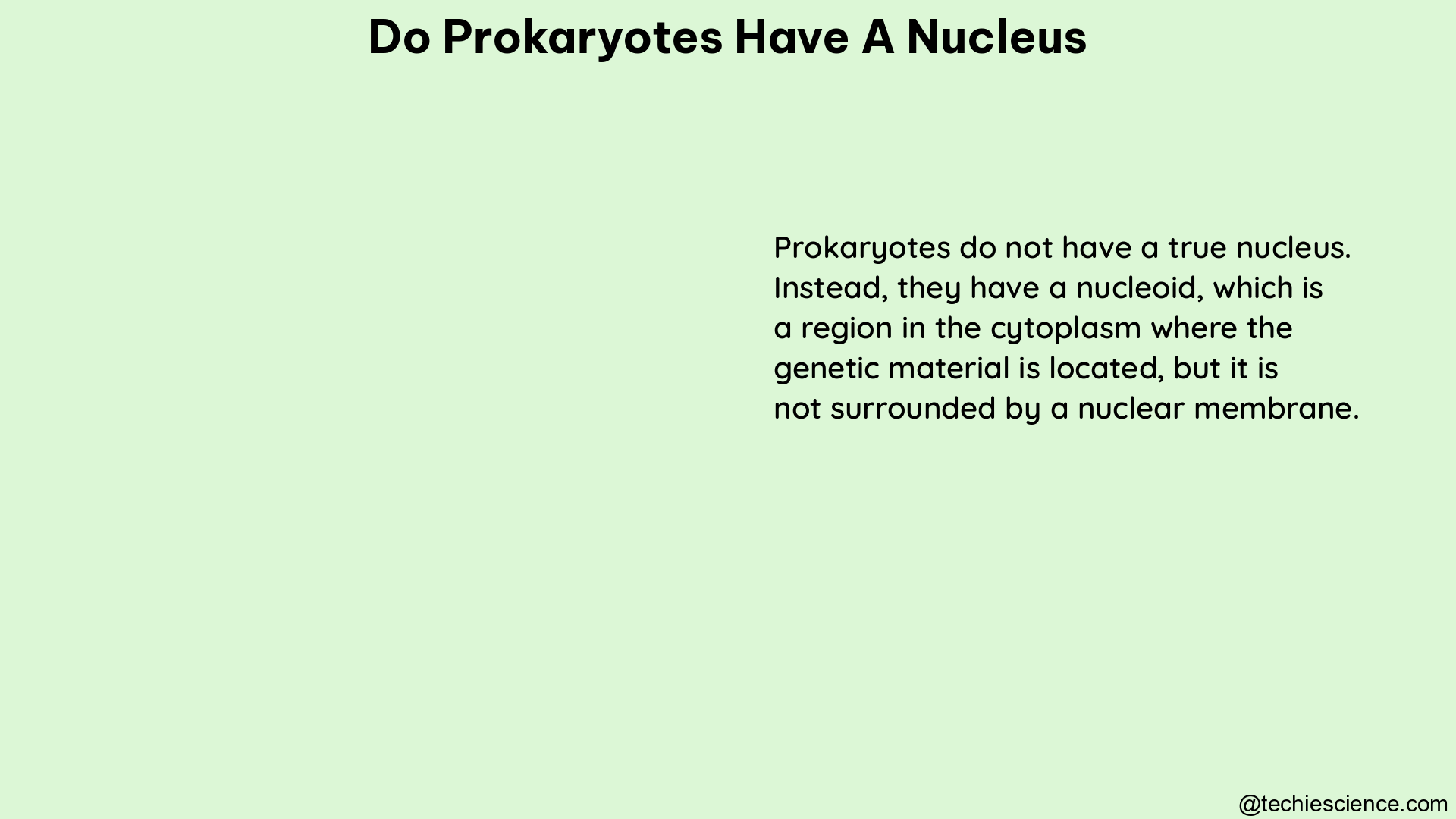Prokaryotes, which include bacteria and archaea, are single-celled organisms that lack a true nucleus or membrane-bound organelles, a fundamental characteristic that distinguishes them from eukaryotic cells. While the absence of a nucleus may seem like a limitation, prokaryotes have evolved unique mechanisms to efficiently carry out essential cellular processes.
The Nucleoid Region: Prokaryotic DNA Storage and Regulation
The genetic material of prokaryotes is not confined within a nuclear envelope, as in eukaryotic cells. Instead, it is concentrated in a specific region called the nucleoid. The nucleoid is a distinct area within the prokaryotic cell where the circular chromosome(s) and associated proteins are located.
- The nucleoid region contains one or more circular chromosomes, which are the primary repositories of genetic information in prokaryotes.
- These chromosomes are typically smaller and less complex than the linear chromosomes found in eukaryotic cells, with an average size of around 4-5 million base pairs.
- The nucleoid region is not as organized or compartmentalized as the nucleus in eukaryotic cells, but it serves a similar purpose in storing and regulating the genetic material.
- Proteins associated with the nucleoid, such as histone-like proteins and DNA-binding proteins, help to compact and organize the genetic material, as well as regulate essential processes like DNA replication, transcription, and translation.
Ribosome Distribution and Protein Synthesis in Prokaryotes

Another key feature that distinguishes prokaryotic cells from eukaryotic cells is the distribution of ribosomes throughout the cytoplasm. In eukaryotic cells, ribosomes are assembled in the nucleolus, a specialized region within the nucleus, and then transported to the cytoplasm for protein synthesis.
- In prokaryotic cells, ribosomal assembly occurs directly in the cytoplasm, without the need for a nuclear compartment.
- Once assembled, these ribosomes can freely move throughout the cytoplasm and even associate with the nucleoid region to participate in protein synthesis.
- This arrangement allows prokaryotic cells to efficiently produce proteins without the need for a nucleus or other membrane-bound organelles, as the ribosomes can directly access the genetic material in the nucleoid region.
Adaptability and Complexity of Prokaryotic Cells
The absence of a nucleus in prokaryotes does not imply a lack of complexity or adaptability. Prokaryotic cells have evolved a wide range of mechanisms to respond to their environment, move, and obtain nutrients to produce energy, just like eukaryotic cells.
- Prokaryotes can exhibit diverse morphologies, ranging from spherical cocci to rod-shaped bacilli, and even spiral or filamentous forms.
- They have developed various strategies for locomotion, such as the use of flagella or pili, allowing them to navigate their surroundings and seek out favorable conditions.
- Prokaryotes can also engage in complex behaviors, such as quorum sensing, where they coordinate their activities based on population density, and biofilm formation, where they create structured communities.
Diversity and Adaptability of Prokaryotic Life
The absence of a nucleus in prokaryotes is a testament to the incredible diversity and adaptability of life on Earth. Prokaryotes have evolved unique mechanisms to store and regulate their genetic material, as well as carry out essential cellular processes, without the need for a true nucleus.
- Prokaryotes are the most abundant and diverse group of organisms on the planet, with an estimated 10^30 individual cells in the biosphere.
- They occupy a wide range of habitats, from the deepest ocean trenches to the highest mountain peaks, and can thrive in extreme environments, such as hot springs, polar regions, and even the human gut.
- Prokaryotes play crucial roles in various ecosystems, including nutrient cycling, decomposition, and symbiotic relationships with other organisms.
In conclusion, the absence of a nucleus in prokaryotes is a fundamental characteristic that sets them apart from eukaryotic cells. However, this lack of a nuclear compartment has not hindered the remarkable adaptability and complexity of prokaryotic life. The nucleoid region and the distribution of ribosomes throughout the cytoplasm are just two examples of the unique mechanisms that allow prokaryotes to function effectively without a true nucleus.
References:
- Do prokaryotes have a nucleus? – BYJU’S. https://byjus.com/question-answer/do-prokaryotes-have-a-nucleus/
- Prokaryotic Cells | Definition, Structure & Examples – Lesson. https://study.com/academy/lesson/do-prokaryotic-cells-have-a-nucleus.html
- Prokaryote – an overview | ScienceDirect Topics. https://www.sciencedirect.com/topics/physics-and-astronomy/prokaryote
- Bacterial Chromosome – an overview | ScienceDirect Topics. https://www.sciencedirect.com/topics/biochemistry-genetics-and-molecular-biology/bacterial-chromosome
- Prokaryotic Cell Structure and Function – ThoughtCo. https://www.thoughtco.com/prokaryotic-cell-structure-and-function-4028621
- Prokaryotic Cells: Definition, Structure, and Examples – Biology Dictionary. https://biologydictionary.net/prokaryotic-cell/

Hi…I am Sadiqua Noor, done Postgraduation in Biotechnology, my area of interest is molecular biology and genetics, apart from these I have a keen interest in scientific article writing in simpler words so that the people from non-science backgrounds can also understand the beauty and gifts of science. I have 5 years of experience as a tutor.
Let’s connect through LinkedIn-